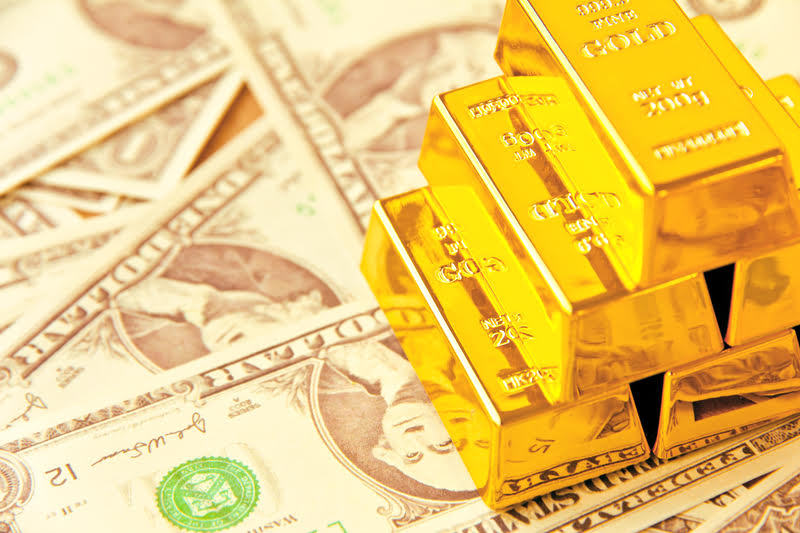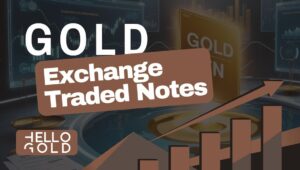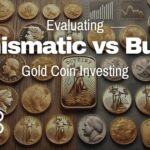Introduction
What if I told you there’s a time-tested investment option that could help you navigate the unpredictable financial landscape, protect your wealth, and diversify your portfolio?
In a world where traditional investments are increasingly subjected to market volatility, economic instability, and inflation, precious metals have proven to be an invaluable addition to a well-rounded investment strategy.
In this comprehensive guide, we will uncover the historical value of these treasured assets, delve into their unique benefits, and discuss the various investment vehicles available to help you build a resilient and diversified portfolio.
So, are you ready to unlock the secrets of precious metals and their potential to enhance your investment strategy?
Join me as we embark on this exciting adventure and discover how gold, silver, platinum, and palladium can play a crucial role in securing your financial future.
Let’s dive in!
The Basics of Precious Metals as Investment Assets
Traditionally sought after for their inherent value and rarity, precious metals have long been considered a viable investment option.
Historical Value of Precious Metals
Since ancient times, precious metals like gold, silver, platinum, and palladium have been recognized for their worth.
Civilizations have used these metals as a store of value, a medium of exchange, and a symbol of wealth.
Today, investors continue to seek out precious metals as a way to diversify their portfolios and hedge against inflation and economic uncertainty.
Gold, Silver, Platinum, and Palladium
A quartet of options exists for investors interested in precious metals: gold, silver, platinum, and palladium.
Each metal possesses unique properties and demand factors that can affect its price and investment potential.
Gold is often considered the most popular precious metal investment due to its long history and widespread recognition.
Silver, while less valuable than gold, offers a versatile investment option due to its dual role as a store of value and industrial metal.
Platinum and palladium, while less well-known, are valued for their rarity and numerous applications in various industries.
Determining Factors for Precious Metal Prices
Influenced by various elements, the prices of precious metals are affected by factors such as supply and demand, geopolitical events, and market sentiment.
For example, gold prices can be influenced by central bank activities, currency fluctuations, and investor sentiment.
Silver prices are impacted not only by investment demand but also by industrial demand in sectors such as electronics and solar energy.
Platinum and palladium prices are heavily influenced by the automotive industry, where they are used in catalytic converters, as well as by mining and geopolitical conditions in countries where these metals are produced.
The Benefits of Investing in Precious Metals
For centuries, investors have turned to precious metals as a means of diversifying their portfolios and protecting their wealth.
In this section, we will delve into the various benefits that investing in precious metals can offer, including:
– Inflation protection
– No credit risk
– Low or negative correlations with other assets
– Upheaval protection.
Inflation Protection
Guarding your wealth against the eroding effects of inflation is a primary concern for many investors.
Precious metals, particularly gold, have historically served as a hedge against inflation. This is because, unlike paper currency, the value of precious metals does not diminish due to the devaluation of a currency.
As inflation rises, the value of precious metals tends to increase as well, helping to preserve your purchasing power.
No Credit Risk
A safe haven for investors during times of economic uncertainty, precious metals do not carry the credit risk associated with other investments, such as bonds or stocks.
When you invest in physical precious metals, you are buying a tangible asset that is not dependent on the financial health of a company or government.
This makes precious metals a valuable addition to any well-diversified investment portfolio.
Low or Negative Correlations with Other Assets
A unique addition to your investment mix, precious metals often exhibit low or negative correlations with other asset classes, such as stocks and bonds.
This means that when other assets are performing poorly or experiencing volatility, precious metals may help to mitigate potential losses by performing independently or even appreciating in value.
Upheaval Protection
Stability amidst chaos is another reason investors turn to precious metals.
During times of geopolitical unrest or economic turmoil, precious metals can provide a sense of security and act as a store of value.
Historically, gold, in particular, has been viewed as a safe-haven asset during such times, helping investors preserve their wealth and navigate uncertain market conditions.

Investment Vehicles for Precious Metals
Diversifying through various investment options is essential when it comes to precious metals.
In this section, we will explore the different investment vehicles available for precious metals, including:
– Physical Bullion
– Exchange-Traded Funds (ETFs)
– Stocks in Mining Companies
– Futures and Options
Physical Bullion
Tangible and traditional, investing in physical bullion, such as coins and bars, is the most direct way to invest in precious metals.
When you own physical bullion, you hold a real asset with intrinsic value. However, it is essential to consider storage and insurance costs when investing in physical precious metals.
Safe deposit boxes or personal safes are popular options for securing your investment.
Exchange-Traded Funds (ETFs)
Convenient and accessible, ETFs offer a popular alternative to owning physical precious metals.
Precious metal ETFs track the price of a specific metal or a basket of metals, allowing investors to gain exposure to the performance of the underlying asset without having to store or handle the metal itself.
ETFs can be bought and sold like stocks through a brokerage account, providing liquidity and ease of trading.
Stocks in Mining Companies
An indirect investment approach to precious metals is investing in the stocks of mining companies.
These companies explore, extract, and process precious metals. By investing in mining stocks, you gain exposure to the performance of the underlying metals without holding the physical assets.
It is essential to research and carefully select mining companies with a strong track record and solid growth potential.
Futures and Options
Advanced strategies for experienced investors include trading futures and options contracts on precious metals.
These derivative instruments allow investors to speculate on the future price movements of precious metals without owning the physical assets.
Trading futures and options can be highly complex and risky, so it is essential to have a thorough understanding of these instruments and the associated risks before venturing into this investment vehicle.
The Role of Gold in a Diversified Portfolio
As a classic investment option, gold has long been a staple in well-rounded portfolios.
Its unique properties, historical performance, and ability to act as a hedge against various risks make it an attractive asset class for many investors.
Gold’s Unique Properties
An attractive asset class, gold possesses certain qualities that set it apart from other investments.
First, its global recognition and acceptance make it a highly liquid asset, allowing investors to buy and sell gold with ease.
Second, its limited supply and steady demand contribute to its long-term value retention.
Finally, its non-correlated nature with other assets provides valuable diversification benefits.
Allocating a Percentage of Your Portfolio
Finding the right balance of gold in your portfolio is crucial to achieving your investment objectives and managing risk.
It’s recommended that investors typically allocate between 5% and 10% of their portfolios to gold. However, this percentage can vary depending on factors such as your individual risk tolerance, investment time horizon, and specific financial goals.
Long-term Performance of Gold
A steady presence in investment portfolios, gold has demonstrated resilience throughout various market cycles and economic conditions.
While its price can be volatile in the short term, gold has historically maintained its purchasing power over the long run.
This makes it a suitable investment option for those seeking long-term wealth preservation and protection against inflation.
Silver, Platinum, and Palladium: The Other Precious Metals
Beyond gold, there are other precious metals that can play a significant role in diversifying your investment portfolio.
Silver, platinum, and palladium each offer unique characteristics and potential benefits for investors looking to branch out from traditional asset classes.
Silver’s Dual Role as a Store of Value and Industrial Metal
A versatile option for investors, silver serves both as a store of value and as an industrial metal with a wide range of applications.
Unlike gold, which is predominantly used for investment and jewelry purposes, silver is heavily utilized in industries such as electronics, medical applications, and renewable energy.
This dual nature of silver can make it an attractive investment, as it benefits from both increased investment demand during times of economic uncertainty and increased industrial demand during periods of economic growth.
Platinum’s Rarity and High Demand
A premium choice among precious metals, platinum is known for its rarity and high demand in various industries. Due to its scarcity and unique properties, platinum often commands a higher price than gold.
It is used in a variety of applications, including automotive catalysts, jewelry, and electronics. As with other precious metals, platinum can provide a hedge against inflation and currency fluctuations, making it a valuable addition to a diversified investment portfolio.
Palladium’s Numerous Applications
Expanding possibilities for investors, palladium is a lesser-known precious metal with a wide range of uses.
Like platinum, palladium is primarily used in automotive catalysts to reduce vehicle emissions. Additionally, it is utilized in electronics, dentistry, medicine, and groundwater treatment, among other applications.
Its diverse uses and growing demand make palladium an attractive option for investors seeking exposure to precious metals.

Factors to Consider When Investing in Precious Metals
Before diving in to the world of precious metals investing, it’s crucial to be aware of the various factors that can impact your investment’s performance and potential risks.
In this section, we will explore the following factors:
Price Volatility
Storage and Insurance Costs
Government Regulations and Taxes
Liquidity Concerns
Counterparty Risk
Price Volatility
Navigating market fluctuations is an essential skill when investing in precious metals.
Due to their unique supply and demand dynamics, precious metal prices can be volatile, exposing investors to potential losses.
It’s important to have a long-term perspective and remain patient during periods of price volatility, as these fluctuations can present buying opportunities or signal a need to reassess your investment strategy.
Storage and Insurance Costs
Protecting your investment in precious metals is vital, particularly when it comes to physical bullion.
You need to consider the costs associated with storing and insuring your precious metals, as these expenses can impact your overall return on investment.
Options for storage include bank safe deposit boxes, personal safes, or third-party storage facilities.
Remember to factor in these costs when determining your investment allocation to precious metals.
Government Regulations and Taxes
Understanding the legal landscape surrounding precious metals investing is crucial.
Some countries may impose restrictions or regulations on the purchase, sale, or ownership of precious metals. Additionally, taxes may apply to capital gains or income derived from your precious metals investments.
Be sure to familiarize yourself with the applicable laws and regulations in your jurisdiction to avoid any surprises and ensure compliance.
Liquidity Concerns
Ensuring accessibility to your precious metals investments is essential, particularly in times of financial stress.
While physical bullion offers a high degree of liquidity, it may be more challenging to sell compared to other investments like stocks or bonds.
To address liquidity concerns, consider diversifying your precious metals investments across various vehicles, such as ETFs and mining stocks, which can be easily bought and sold on financial markets.
Counterparty Risk
Choosing reputable dealers when buying precious metals is crucial for minimizing counterparty risk.
This risk arises when dealing with dealers or brokers who may default or fail to deliver on their obligations.
To mitigate counterparty risk, research dealers thoroughly and opt for those with a strong track record, secure payment methods, and transparent pricing.
Integrating Precious Metals into Your Portfolio
To strike a balance when incorporating precious metals into your investment portfolio, it is essential to consider several factors.
These factors include:
Determining your investment objectives
Assessing your risk tolerance
Researching precious metal investment options
Creating a diversification strategy
Maintaining and rebalancing your portfolio.
In this section, we will delve into each of these critical components and provide guidance on how to effectively integrate precious metals into your overall investment strategy.
Determining Your Investment Objectives
Aligning with your goals is the first step in incorporating precious metals into your portfolio.
Before investing, you need to identify your primary objectives for holding precious metals. These objectives may include hedging against inflation, protecting your wealth during economic or geopolitical turmoil, or simply diversifying your portfolio.
By establishing your investment goals, you can make more informed decisions about the types of precious metals and investment vehicles that best align with your objectives.
Assessing Your Risk Tolerance
Knowing your limits when it comes to investing in precious metals is crucial.
Each investor has a unique risk tolerance, which should be taken into account when determining the appropriate allocation to precious metals.
Generally, investors with a higher risk tolerance may choose to allocate a larger percentage of their portfolio to precious metals, while more conservative investors may opt for a smaller allocation.
It’s essential to evaluate your risk tolerance and adjust your investment strategy accordingly to avoid taking on undue risk.
Researching Precious Metal Investment Options
Gathering insights into the various precious metal investment options available is a vital step in the integration process.
As mentioned earlier, there are several investment vehicles to choose from, including physical bullion, ETFs, mining stocks, and futures and options contracts.
Take the time to research each option thoroughly, evaluating the benefits, risks, and potential returns associated with each.
This process will help you make an informed decision about which investment vehicles best suit your needs and goals.
Creating a Diversification Strategy
Formulating a plan for diversifying your portfolio with precious metals is a crucial aspect of the integration process.
This strategy should take into account your investment objectives, risk tolerance, and the investment options available.
In general, a well-diversified precious metals portfolio will include a mix of different metals and investment vehicles to spread risk and maximize potential returns.
Maintaining and Rebalancing Your Portfolio
Adapting to changes in the market and your investment objectives is an essential part of integrating precious metals into your portfolio.
Regularly monitor and assess the performance of your precious metals investments, and make adjustments as needed to ensure that your portfolio remains aligned with your goals.
This may include rebalancing your portfolio by selling or buying precious metals to maintain your desired allocation or adjusting your investment strategy to account for changes in the market or your objectives.
The Future of Precious Metals Investing
With market uncertainty and rapid advancements in technology, the landscape of precious metals investing is continuously evolving.
In this section, we will examine:
The impact of technological advancements.
Geopolitical factors and the global economy.
Emerging Investment Trends
Environmental and social considerations
The Impact of Technological Advancements
The evolving landscape of technology can have profound effects on the precious metals market, both in terms of demand and investment opportunities.
For example, the increasing use of electric vehicles and renewable energy technologies can impact the demand for metals such as silver, platinum, and palladium, which are used in various components of these technologies.
In addition, advancements in financial technology, such as blockchain and digital currencies, may present new ways to invest in and trade precious metals.
For instance, digital gold tokens and other asset-backed cryptocurrencies are emerging as alternatives to traditional investment vehicles.
As an investor, staying informed about technological advancements and their potential impact on the precious metals market is crucial for adapting your investment strategy and seizing new opportunities.
Geopolitical Factors and Global Economy
Navigating a complex world of geopolitical factors and global economic trends can be challenging for precious metals investors.
The prices of these metals can be influenced by various events, such as political instability, trade disputes, and economic crises.
To mitigate the impact of these factors, it’s essential to maintain a diversified investment portfolio and stay informed about global developments that could affect the precious metals market.
This can help you make timely adjustments to your investment strategy and capitalize on emerging trends or challenges.
Emerging Investment Trends
Adapting to new opportunities in the precious metals market requires staying up-to-date on emerging investment trends.
For example, the rise of sustainable and responsible investing has led to increased interest in precious metals mining companies that adhere to strict environmental, social, and governance (ESG) standards.
Furthermore, the growing popularity of alternative investments, such as collectibles and fine art, may influence the demand for certain precious metals, particularly gold and silver.
Staying abreast of these trends can help you identify new investment opportunities and make informed decisions about your precious metals portfolio.
Environmental and Social Considerations
Responsible investing is becoming increasingly important for many investors, and this trend extends to the precious metals market.
When investing in precious metals, particularly through mining stocks, it’s essential to consider the environmental and social impact of the companies in which you invest.
Some key factors to consider include:
– The company’s environmental practices, such as water and energy usage, waste management, and emissions reduction.
– The company’s labor practices, community engagement, and commitment to ethical sourcing.
By integrating environmental and social considerations into your precious metals investment strategy, you can make a positive impact while still pursuing your financial goals.
Summing It Up
Precious metals have enduring value that can help weather any financial storm.
By integrating metals like gold, silver, platinum, and palladium into your investment portfolio, you gain exposure to assets that tend to hold their worth over time while providing diversification from traditional investments.
Although precious metals prices may fluctuate in the short term, their ability to hedge against inflation and market volatility makes them attractive options for long-term investors seeking stability and wealth protection.
With responsible investment options and new opportunities emerging in the digital space, precious metals are poised to remain a steady and vibrant presence in the investment landscape for years to come.











